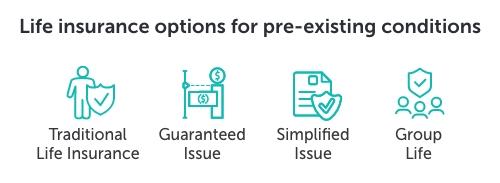Life insurance serves as a crucial financial safety net, providing peace of mind and security for policyholders and their loved ones. However, navigating the complexities of life insurance policies can be challenging, particularly when it comes to understanding exclusions related to pre-existing conditions. These exclusions can significantly impact the coverage a policyholder might receive, yet they are often shrouded in legal jargon and intricate details that can be difficult to decipher. This article aims to shed light on the nuances of life insurance exclusions for pre-existing conditions, offering clarity and insight into how these provisions work, why they exist, and what potential policyholders should consider when selecting a life insurance plan. By demystifying these exclusions, individuals can make more informed decisions, ensuring that they secure the protection that best suits their needs and circumstances.
Common Pre-Existing Conditions and Their Impact on Life Insurance Policies
When applying for life insurance, certain health conditions can significantly affect the terms of your policy. Pre-existing conditions like diabetes, heart disease, and hypertension are often at the forefront of considerations for insurers. These conditions may lead to higher premiums or even exclusions from coverage. Insurers assess the risk associated with these health issues and determine how they may impact the likelihood of a policyholder filing a claim. This evaluation often results in one of several outcomes:
- Higher Premiums: Individuals with pre-existing conditions may be required to pay more due to the increased risk perceived by the insurer.
- Coverage Exclusions: Some policies may exclude coverage for deaths related to certain pre-existing conditions, meaning the beneficiaries might not receive a payout if the policyholder dies from a related cause.
- Policy Denial: In some cases, insurers might deny coverage altogether if they deem the risk too high.
- Waiting Periods: Policies may include waiting periods during which claims related to pre-existing conditions will not be paid.
Understanding these potential impacts is crucial for applicants with pre-existing conditions. It helps in selecting a policy that aligns with their needs and circumstances, ensuring that their loved ones are adequately protected.
Navigating Policy Terms to Identify Exclusions for Pre-Existing Conditions
When delving into the specifics of life insurance policies, understanding the exclusions related to pre-existing conditions is crucial. Insurers often have detailed clauses that outline what is not covered, which can vary significantly between providers. A pre-existing condition is typically any medical condition that existed before the start of the insurance policy. Identifying these exclusions requires careful examination of the policy documents, usually found under sections labeled ‘Exclusions’ or ‘Limitations’. It is essential to scrutinize these sections to ensure clarity on what the insurer deems as pre-existing conditions.
- Review Policy Documents: Look for specific terms like “pre-existing condition” and any related exclusions.
- Clarify Ambiguities: If the language is vague, consider contacting the insurer directly for clarification.
- Understand Time Frames: Some policies may define a pre-existing condition based on a set time period before policy inception, such as six months or a year.
Comprehending these exclusions not only helps in setting realistic expectations but also aids in making informed decisions about the coverage that best suits your needs. Always remember, while exclusions might initially seem restrictive, they are standard practice to mitigate risk for insurers.

Strategies for Disclosing Pre-Existing Conditions to Life Insurance Providers
When approaching life insurance providers, honesty about your health history is crucial, yet it requires a strategic approach to ensure fair consideration. Preparation is key: gather all necessary medical documentation and understand your condition’s details. This includes any treatments you’ve undergone and their outcomes. Communication should be clear and factual. Explain your condition in a straightforward manner, focusing on stability and management strategies. If possible, provide evidence of improved health or successful management, which could positively influence the underwriting decision.
- Gather Medical Documentation: Collect recent medical reports, treatment summaries, and any relevant tests.
- Explain Condition Management: Highlight any lifestyle changes or medical interventions that have stabilized your condition.
- Consult a Professional: Consider discussing your disclosure approach with a financial advisor or insurance broker.
Engaging directly with an underwriter or using an insurance broker can also provide insights into how best to present your case. They can offer guidance on what specific information insurers might seek and how to best articulate your health narrative. This proactive and transparent approach not only enhances trust but also positions you to negotiate better terms and coverage.

Expert Recommendations for Securing Coverage with Pre-Existing Conditions
Securing life insurance coverage when you have pre-existing conditions can seem daunting, but with the right approach, it becomes more manageable. Here are some expert recommendations to guide you through the process:
- Research and Compare: Start by exploring different insurance providers and their policies. Each company has unique underwriting guidelines, and some may be more lenient toward certain conditions than others. Comparative shopping is crucial in finding a policy that suits your needs.
- Be Transparent: It’s essential to be honest about your health history. Providing accurate information upfront can prevent complications or denial of coverage later on. Insurers appreciate transparency and may offer more favorable terms as a result.
- Consider High-Risk Providers: Some insurers specialize in covering high-risk individuals. These companies might offer tailored policies that accommodate your specific health situation, though they may come at a higher premium.
- Work with a Broker: A knowledgeable broker can help navigate the complexities of the insurance landscape. They can offer insights and access to policies that you might not find on your own, potentially improving your chances of securing suitable coverage.

